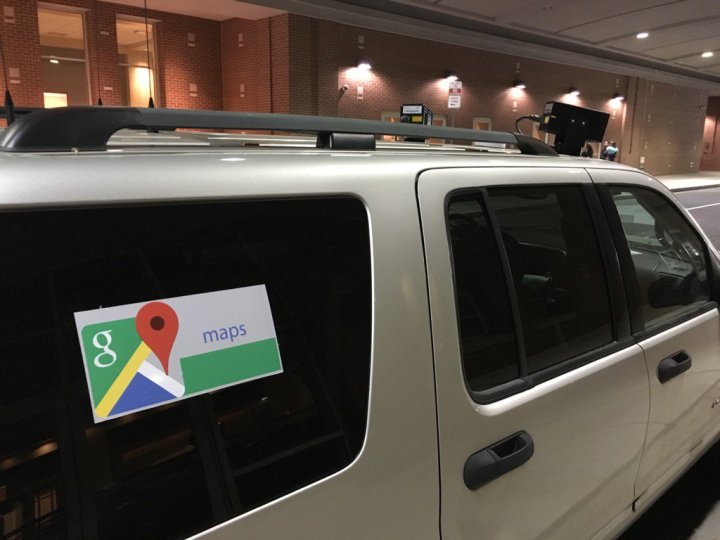
As Blaze inspected the vehicle more closely, his suspicions were confirmed as visible documents on the dashboard strongly suggested it belonged to the Philadelphia Police Department. Smelling something fishy (though not literally, as far as we know), Blaze hit Twitter with news of his shock discovery:
WTF? Pennsylvania State Police license plate reader SUV camouflaged as Google Street View vehicle. pic.twitter.com/0z4yo2rVoR
— matt blaze (@mattblaze) May 11, 2016
Following initial confusion about who really did own the vehicle, it later emerged that the camera was part of the police department’s automated license plate recognition kit and nothing at all to do with capturing panoramic images for Google’s popular online service.

In a statement to Motherboard, a spokesperson for Philadelphia police said, “We have been informed that this unmarked vehicle belongs to the police department; however, the placing of any particular decal on the vehicle was not approved through any chain of command. With that being said, once this was brought to our attention, it was ordered that the decals be removed immediately.”
Not surprisingly, Google has said it’s investigating the unauthorized use of its Google Maps logo, though declined to comment further on the incident.
Cops haven’t stated explicitly why its vehicle sported the Google Maps decal, but the obvious explanation is that it didn’t want to alert nearby drivers – especially ones who for whatever reason are keen to steer clear of law enforcement – as to the true nature of its operation.
License plate readers have long been the subject of controversy, with privacy campaigners voicing concern about how the technology collects and stores data in what many consider to be an unrestricted mass surveillance program. The technology is capable of recording and checking plates not only in front of the car but all around it, allowing it to record potentially hundreds of plates a minute. You can read more about how it works here.
As for the Philly incident, it certainly isn’t Google’s first road-based run-in with the cops – though this time the shoe is clearly on the other foot.
Editors' Recommendations
- Google is bringing Chrome browser to cars, even more EV features to Maps
- Google deploys a Jaguar I-Pace as its first all-electric Street View car
- Apple Maps expands its Street View-style imagery to 3 more cities
- Google Maps working on feature that shows well-lit streets?
- Google’s fun AR walking directions are ready for your Android phone and iPhone


